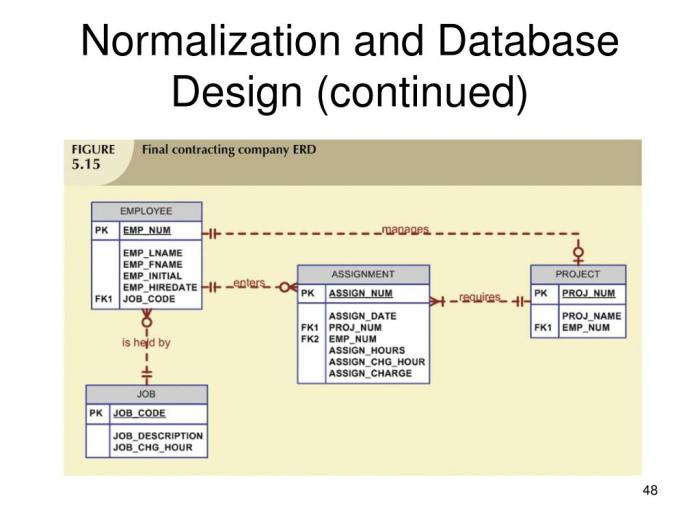What are the different types of database normalization techniques? Understanding this question is crucial for anyone involved in database design and management. Normalization is the process of organizing data to reduce redundancy and improve data integrity. As we explore the various levels of normalization—from First Normal Form to higher forms like Fifth Normal Form—we’ll discover how each type addresses specific challenges in database design, ensuring that our data remains accurate, efficient, and easy to manage.
Each level of normalization builds upon the last, introducing key principles that help streamline database structures. By applying these techniques, developers can avoid common pitfalls such as data anomalies and ensure that their databases perform optimally. In this journey, we will delve into the specifics of each normalization form, illustrating their requirements and benefits.
Introduction to Database Normalization Techniques
Database normalization is a systematic approach to organizing data in a relational database to reduce redundancy and improve data integrity. It involves structuring a database in such a way that dependencies are properly enforced, facilitating efficient data management. The importance of normalization lies in its ability to streamline data operations, minimize the potential for anomalies, and simplify data retrieval, ultimately leading to more reliable and maintainable databases.Normalization typically involves several levels, known as normal forms, each building on the previous one.
The most commonly referenced normal forms are the First Normal Form (1NF), Second Normal Form (2NF), Third Normal Form (3NF), and Boyce-Codd Normal Form (BCNF). Each normal form addresses specific types of data anomalies and aims to ensure that data is stored logically and consistently.
Levels of Database Normalization
Understanding the various levels of database normalization is crucial for effective database design. Each level serves a distinct purpose in organizing data and ensuring its integrity. The primary normal forms are:
- First Normal Form (1NF): Ensures that the table structure is flat, with no repeating groups or arrays. Each field must contain atomic values, and each record must be unique.
- Second Normal Form (2NF): Builds on 1NF by ensuring that all non-key attributes are fully functionally dependent on the primary key, eliminating partial dependencies.
- Third Normal Form (3NF): Further refines 2NF by ensuring that all attributes are only dependent on the primary key, thus removing transitive dependencies.
- Boyce-Codd Normal Form (BCNF): A stronger version of 3NF, BCNF addresses certain types of anomalies that 3NF does not cover, ensuring that every determinant is a candidate key.
The application of these normalization techniques offers numerous benefits in database design, including:
- Reduced Data Redundancy: By organizing data into separate tables based on relationships, normalization minimizes the duplication of data storage.
- Improved Data Integrity: Ensuring that data dependencies are properly enforced helps maintain accuracy and consistency across the database.
- Easier Maintenance: A well-normalized database is easier to update because changes made in one table do not necessitate changes in other tables.
- Enhanced Query Performance: With reduced data redundancy and improved relationships among tables, query performance can be optimized, allowing for faster data retrieval.
“The goal of normalization is to isolate data so that it can be structured and accessed efficiently.”
Overall, applying database normalization techniques effectively is vital for developing a robust database system that meets the needs of modern applications while ensuring data reliability and efficiency.
First Normal Form (1NF): What Are The Different Types Of Database Normalization Techniques
First Normal Form (1NF) is a foundational concept in database normalization that aims to eliminate duplicate data and ensure that the data structure adheres to certain rules. The primary goal of 1NF is to ensure that each column in a table holds atomic values, and each entry in a column is of the same data type. This standardization is crucial for organizing data effectively and prevents issues such as redundancy and inconsistency.To achieve First Normal Form, a table must meet the following requirements:
- Each table cell must contain a single value (atomicity).
- Each entry in a column must be of the same data type.
- Each column must have a unique name.
- The order in which data is stored does not matter.
Converting a Non-1NF Table to a 1NF Table
When dealing with a non-1NF table, it is essential to recognize its structure and how it can be normalized. For example, consider a table that stores customer orders, where multiple products are listed in a single cell. Non-1NF Example:| OrderID | CustomerName | Products ||———|————–|——————–|| 1 | John Doe | Apples, Bananas || 2 | Jane Smith | Oranges || 3 | Emily Davis | Grapes, Peaches |This table does not meet the requirements of 1NF since the “Products” column contains multiple values.
The role of artificial intelligence in business intelligence is becoming increasingly vital as companies strive to leverage data effectively. AI enhances data analysis, allowing businesses to predict trends, personalize customer interactions, and optimize operations. This integration not only improves efficiency but also sharpens competitive advantage, making it essential for modern enterprises.
To convert this table to 1NF, we must split the “Products” into separate rows. 1NF Example:| OrderID | CustomerName | Product ||———|————–|———–|| 1 | John Doe | Apples || 1 | John Doe | Bananas || 2 | Jane Smith | Oranges || 3 | Emily Davis | Grapes || 3 | Emily Davis | Peaches |In this normalized version, each cell contains a single value, and the structure adheres to the 1NF requirements.
Limitations and Challenges of Implementing 1NF
While achieving First Normal Form is essential for establishing a solid database structure, there are several limitations and challenges that one may encounter during the implementation.
1. Increased Number of Rows
Converting a table to 1NF can significantly increase the number of rows, potentially leading to performance issues when querying large datasets.
2. Data Duplication
Although 1NF reduces redundancy within individual records, it may lead to duplication of other data across multiple rows, such as customer names.
3. Complex Queries
As the number of rows grows, the complexity of queries can increase, making it challenging to retrieve and manipulate data efficiently.
4. Relationships Between Data
Maintaining the relationships between normalized data can become complicated, especially when dealing with foreign keys and multiple tables.In summary, while First Normal Form is crucial for data integrity and organization, its implementation can create challenges that need to be managed to maintain an efficient and effective database system.
Second Normal Form (2NF)
Second Normal Form (2NF) is a crucial step in the database normalization process, aimed at reducing data redundancy and improving data integrity. While achieving First Normal Form (1NF) involves ensuring that each column in a table contains atomic values, 2NF takes it a step further by addressing the concept of partial dependency. In 2NF, all non-key attributes must be fully dependent on the primary key, ensuring that no attribute depends on a part of a composite primary key.To understand 2NF, it is essential to grasp the concept of partial dependencies.
Understanding the impact of business intelligence on decision making is crucial for organizations aiming to thrive in today’s data-driven landscape. Business intelligence tools provide key insights that enable leaders to make informed, strategic choices. By harnessing data analytics, companies can respond swiftly to market changes, ultimately boosting their overall performance and growth potential.
A partial dependency occurs when a non-key attribute is dependent on only a portion of a composite primary key rather than the whole key. This situation can lead to data anomalies and redundancy if not addressed. The process of identifying and removing partial dependencies involves evaluating the relationships between attributes and restructuring the database schema to ensure that all non-key attributes depend on the entire primary key.
Identifying and Removing Partial Dependencies
Recognizing partial dependencies is fundamental in converting a table from 1NF to 2NF. The following steps Artikel the process:
1. Identify the Primary Key
Determine if the table has a composite primary key, which consists of two or more attributes.
2. Examine Non-Key Attributes
Assess each non-key attribute to see if it depends on the entire primary key or just part of it.
3. Remove Partial Dependencies
If a non-key attribute depends only on a portion of the key, it should be separated into a new table where it can be fully dependent on its own primary key.
4. Create Relationships
Establish foreign key relationships between the original table and the new table to maintain data integrity.To illustrate the transformation from 1NF to 2NF, consider the following example:
| 1NF Table | Attributes |
|---|---|
| Enrollment | StudentID, CourseID, StudentName, CourseName |
In this 1NF table, both StudentName and CourseName depend only on parts of the composite key (StudentID and CourseID). To achieve 2NF, we can decompose the table as follows:
| Student Table | Attributes |
|---|---|
| Students | StudentID, StudentName |
| Courses | CourseID, CourseName |
| Enrollment | StudentID, CourseID |
In this transformation, the `Students` table contains StudentID and StudentName, while the `Courses` table contains CourseID and CourseName. The `Enrollment` table now only holds the composite primary key of StudentID and CourseID, ensuring all non-key attributes are fully dependent on the primary key, thus achieving 2NF.
Third Normal Form (3NF)
Third Normal Form (3NF) is a crucial step in the process of database normalization. It aims to ensure that a database is free from undesirable characteristics, such as redundancy and the potential for data anomalies. Achieving 3NF requires that all non-key attributes are not only functionally dependent on the primary key but also that there are no transitive dependencies present.To reach Third Normal Form, a table must satisfy two essential criteria: it must already be in Second Normal Form (2NF), and all non-key attributes must be directly dependent on the primary key.
Crucially, this means eliminating any transitive dependencies, which occur when a non-key attribute depends on another non-key attribute rather than directly on the primary key.
Transitive Dependencies and Their Elimination
Transitive dependencies can cause issues in databases because they create unnecessary coupling between attributes. For instance, if column A determines column B, and column B determines column C, then column C is transitively dependent on column A. This relationship complicates updates and can lead to inconsistencies.To eliminate transitive dependencies and achieve 3NF, it is necessary to restructure the tables. This often involves creating new tables to isolate the attributes that are transitively dependent.
Each of these new tables should have a primary key that uniquely identifies its records.Consider the following example of a table in 2NF that is not in 3NF:
| StudentID | StudentName | AdvisorID | AdvisorName |
|---|---|---|---|
| 1 | Alice | 101 | Dr. Smith |
| 2 | Bob | 102 | Dr. Jones |
In this table, the `AdvisorName` is transitively dependent on `StudentID` through `AdvisorID`. To convert this table into 3NF, we should separate the advisors into their own table: New Student Table:
| StudentID | StudentName | AdvisorID |
|---|---|---|
| 1 | Alice | 101 |
| 2 | Bob | 102 |
New Advisor Table:
| AdvisorID | AdvisorName |
|---|---|
| 101 | Dr. Smith |
| 102 | Dr. Jones |
By reorganizing the data into these two tables, we eliminate the transitive dependency of `AdvisorName` on `StudentID`, thus achieving Third Normal Form. This structure enhances data integrity and reduces redundancy, making the database more efficient and easier to maintain.
Higher Normal Forms (BCNF, 4NF, 5NF)

In the evolution of database normalization, higher normal forms are essential to address more complex data relationships and ensure data integrity. These forms go beyond the objectives of the first three normal forms, focusing on eliminating redundancy while managing potential anomalies in data operations. In this segment, we will delve into Boyce-Codd Normal Form (BCNF), Fourth Normal Form (4NF), and Fifth Normal Form (5NF), exploring their unique characteristics and applications.
Boyce-Codd Normal Form (BCNF)
Boyce-Codd Normal Form (BCNF) is an advanced version of the Third Normal Form (3NF) that tackles certain types of redundancy not addressed by 3NF. A relation is in BCNF if, for every one of its non-trivial functional dependencies (X → Y), X is a superkey. This condition ensures that every determinant in the relation is a candidate key, thus removing any remaining anomalies related to functional dependencies.The application of BCNF is particularly significant in scenarios where 3NF fails to eliminate redundancy.
Consider a scenario in a university database where a table holds information about students, courses, and instructors. If a particular course can only be taught by one instructor, but that instructor teaches multiple courses, there is a risk of redundancy. By restructuring the table into BCNF, we can separate the instructor information into its own relation, thereby preserving data integrity and reducing redundancy.
Fourth Normal Form (4NF), What are the different types of database normalization techniques
Fourth Normal Form (4NF) is mainly concerned with multi-valued dependencies. A relation is in 4NF if it is in BCNF and contains no multi-valued dependencies. This form is crucial for eliminating redundancy that arises when one attribute in a relation depends on another attribute, leading to multiple rows for the same value.For example, consider a table that records authors and the books they write, along with the genres of those books.
If an author can write multiple books in multiple genres, we face a multi-valued dependency. In 4NF, the table would be decomposed into separate relations for authors and their corresponding genres and books, allowing for a more organized structure without redundant data.
Fifth Normal Form (5NF)
Fifth Normal Form (5NF), also known as Project-Join Normal Form (PJNF), addresses cases where a relation can be decomposed into smaller relations without loss of information, specifically in scenarios involving complex relationships. A relation is in 5NF if it is in 4NF and every join dependency in the relation is a consequence of the candidate keys.The necessity of 5NF often arises in complex databases involving multiple entities.
For instance, in a scenario with projects, employees, and skills, if an employee can work on multiple projects and possess multiple skills, we can break this data into distinct relations. This separation allows us to manage the relationships more effectively, avoiding redundancy while maintaining the ability to reconstruct original data through joins.In practice, applying 5NF can significantly enhance data integrity and reduce the likelihood of anomalies, especially in intricate schemas.
It ensures that each fact is represented in a way that minimizes redundancy while allowing for comprehensive data retrieval through effective joins.


